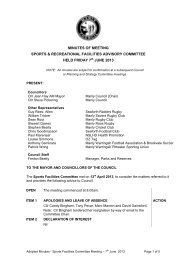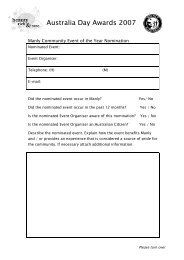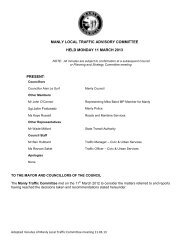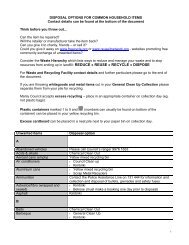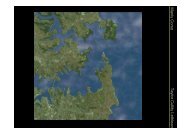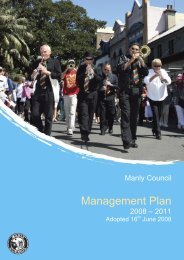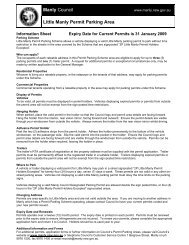Manly Lagoon Dredging Project - Manly Council - NSW Government
Manly Lagoon Dredging Project - Manly Council - NSW Government
Manly Lagoon Dredging Project - Manly Council - NSW Government
- No tags were found...
You also want an ePaper? Increase the reach of your titles
YUMPU automatically turns print PDFs into web optimized ePapers that Google loves.
<strong>Manly</strong> <strong>Lagoon</strong> <strong>Dredging</strong> <strong>Project</strong> – Review of Environmental FactorsPrepared for <strong>Manly</strong> and Warringah <strong>Council</strong>sIn order to ensure exposure of any enterococci in the bund water to sunlight, thebunds will be sited away from shade, and the depth of water within the bunds will bemaintained at a level which allows penetration of sunlight;The bags, and all associated infrastructure can withstand expected pH levels;The potential for spontaneous combustion in the bags has been fully considered;Any processes likely to be initiated while the sediment/water is in the bag that mayaffect the quality of the water or the sediment (for example, water becomingdeoxygenated prior to release back into the lagoon, etc) have been fully considered.In the event that any flood or spill event occurs which may lead to a deterioration in waterquality, the closure of Queenscliff beach (located downstream) will be considered as aprecautionary measure.Silt curtains shall be designed and selected to be able to withstand a 5 year ARI flood event,however the design should also consider any circumstances under which the silt curtainsmay need to be removed to allow passage of flood waters.The dredging plans in Appendix J have been developed to remove the volume of sedimentwhich has accumulated since the MHL (1992) survey. This ensures that the material to beremoved is comprised solely of sediments which have accumulated by natural processessince this date, and thereby significantly reduces the likelihood that sediment with anunexpected composition will be encountered.Wherever possible works should be scheduled during dry weather or when low flows areexpected within <strong>Manly</strong> <strong>Lagoon</strong>, as in-stream sediment and erosion controls are much easierto manage in these conditions.Overburden Water from Dewatering ActivitiesThe geobags should be sited within a structure which:Enables containment and testing of overburden water from the dewatering processuntil testing has confirmed that it is of acceptable quality for return to the lagoon;Provides for exposure of the water to sunlight in order to provide an opportunity fordie-off of Enterococci, noting that a 6.6 hour exposure to sunlight will reduceconcentrations in the water by 90% (Kay et al., 2005).Alternative methods of disposal are to be made available for any water that is deemed not ofsuitable quality for returning to the lagoon. Possible methods may include recirculationthrough the geobag to provide further treatment, disposal off-site, or disposal to SydneyWater Corporation’s (SWC) sewer system. In the event that discharge is made to the sewersystem, the flow rate to the sewer system is not to exceed the maximum peak and averagedaily discharge nominated by Sydney Water.The trial dredging demonstrated the polymer ULTIMER 7757 to be effective at 25ppm. Therange of allowable dosing rate of the polymer will be up to 100ppm. While it is expected thatthe lower end of the range will efficiently flocculate typical sediment slurries, a range hasbeen provided to accommodate sediments with greater mud content than present in the trial2 July 2010 Cardno (<strong>NSW</strong>/ACT) Pty Ltd 68H:\Doc\2010\Reports.2010\Rep2580v4.doc



